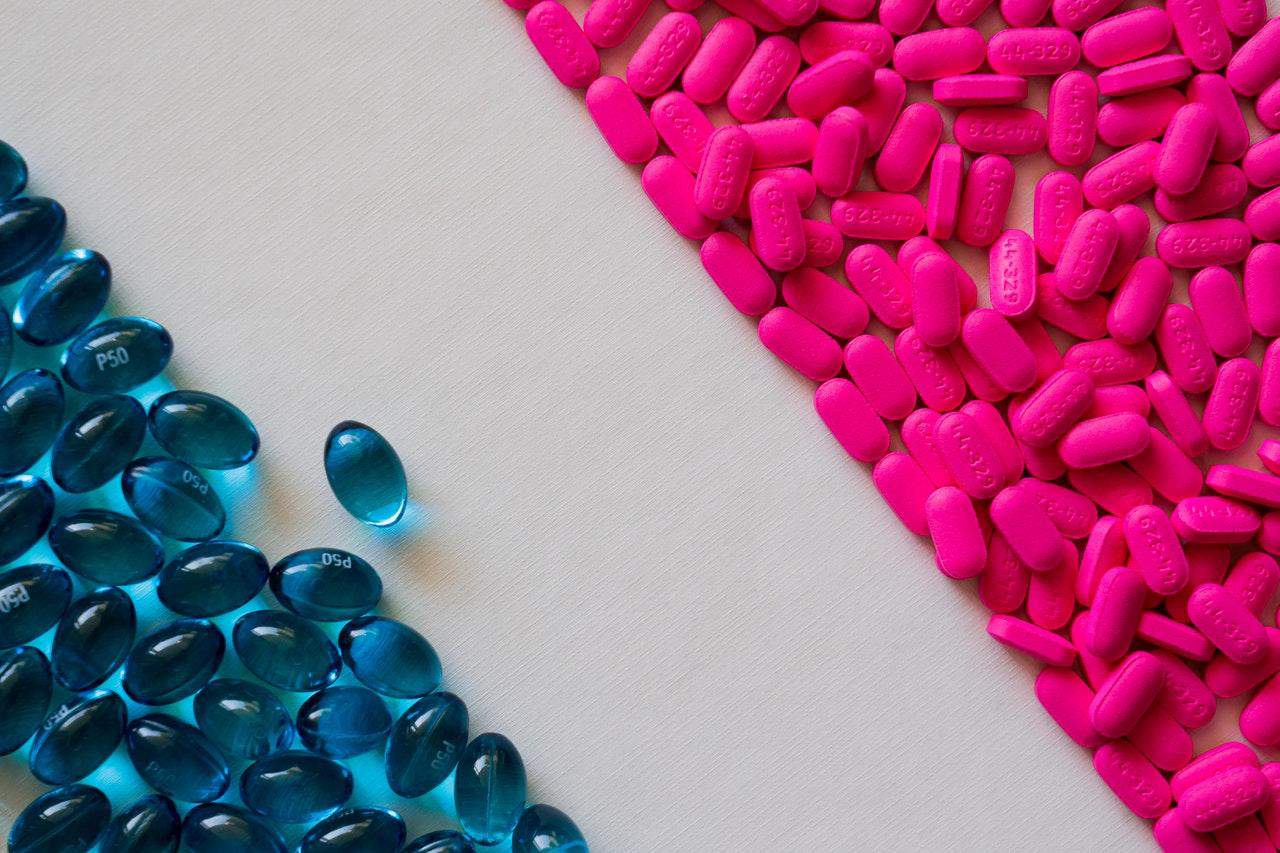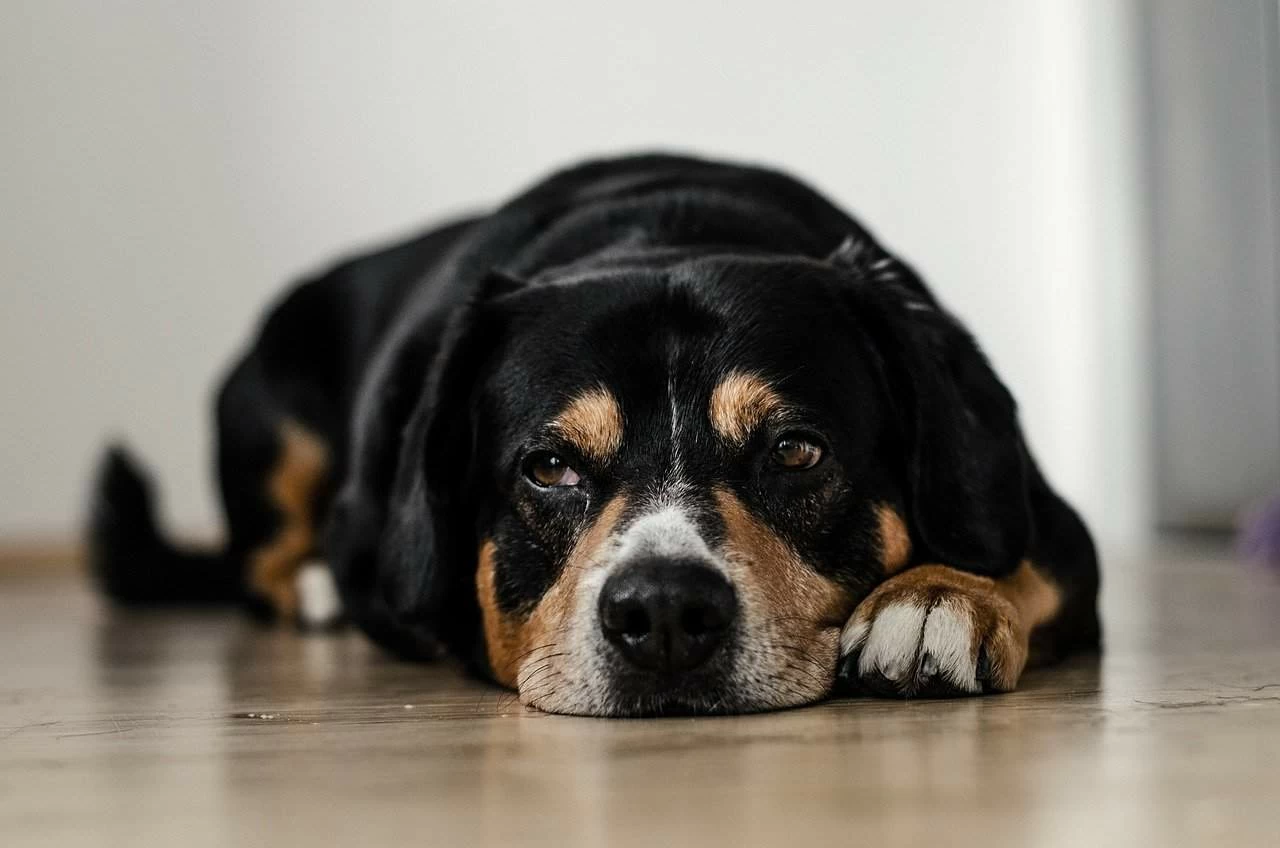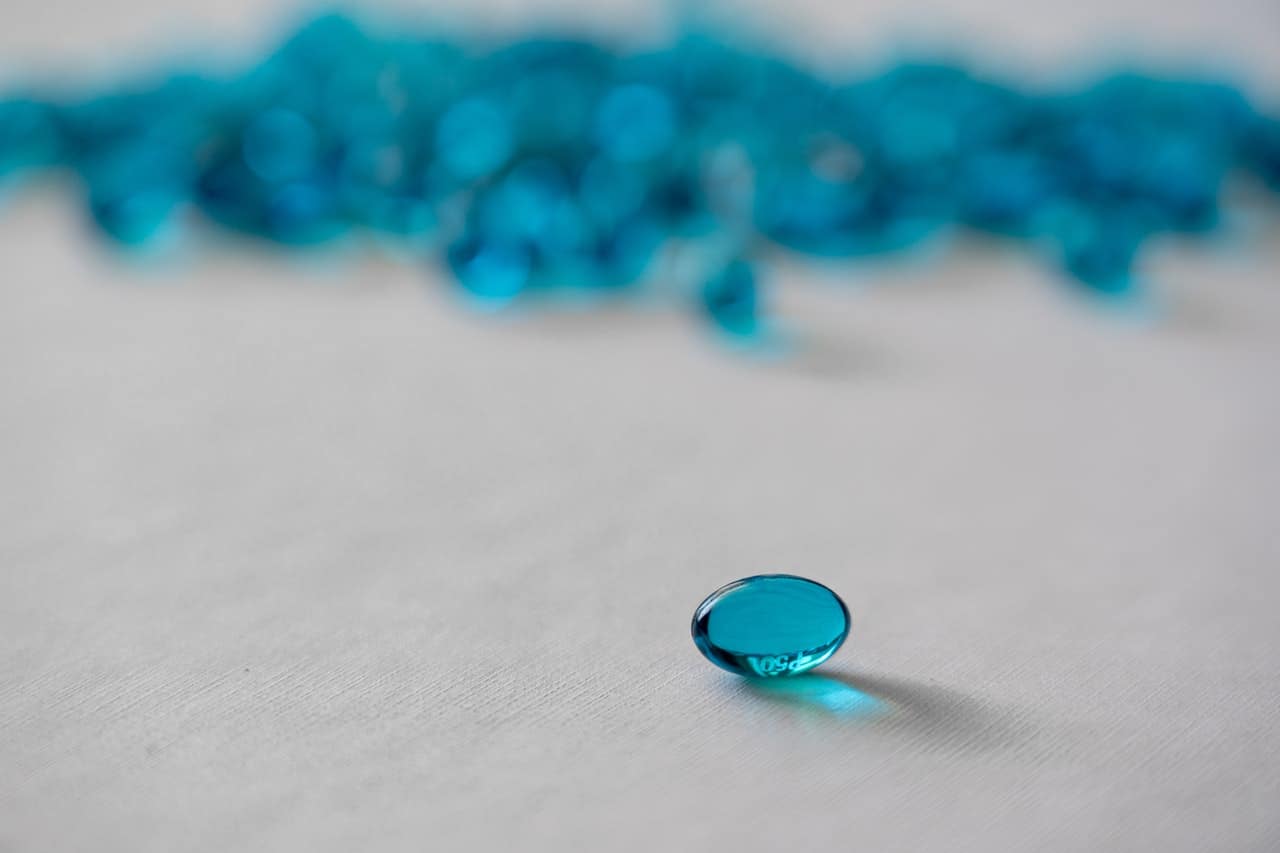Don’t you just hate it when your dog decides, with no rhyme nor reason, to take matters into its own hands (paws)?
Like, for example, that time it was feeling a bit anxious before fireworks night… and took a few bars of Xanax.
Or just then, when it swallowed a couple of Nyquil capsules because it was feeling a bit under the weather.
Silly pup.
Now that your dog ate Nyquil- what’s going to happen? Is it in any danger?
There are many different variations of NyQuil, and while there certainly are some minor differences between them, they do all largely share a few of the same active ingredients.
Unfortunately, some of these elements are indeed toxic to dogs. A dog that has eaten a large dose of the medicine may display various signs including vomiting, diarrhea, pale gums and difficulty breathing. In serious cases, it could suffer liver and red blood cell damage.
Luckily, the margin for safety of human medications is very high, even when it involves canines. A dog would either have to be extremely small, or eat an extremely large quantity of capsules, to experience moderate to severe poisoning.
It may still feel sleepy after ingesting the medicine, but that is a regular side effect that should wear off naturally on its own.
If you still feel exceedingly worried about your dog’s health, it might be a good idea to induce vomiting or to administer activated charcoal- though both of these require timely action. Otherwise, simply take it to the vet to fully put your mind at ease!
Will NyQuil Hurt My Dog?

Whether or not the NyQuil that your dog ate will be harmful depends on 3 main factors: the version in question, the quantity of it that was eaten, and the size and weight of your dog.
There are many different types, formulations and even flavors of NyQuil, each geared for a slightly different purpose or audience.
For example, NyQuil ‘VapoCOOL’ is designed for those who need cooling relief for a dry, scratchy or sore throat.
NyQuil ‘Severe Cold & Flu’ is exactly as its name suggests- made for those that have severe cold and flu symptoms.
And NyQuil ‘Berry’ and ‘Honey’ flavors were created for the people who can’t take cold medication unless it tastes “honey-licious” (Editor’s note: guilty!).
However, despite there being over 15 different products in the overall range, they all commonly share three active ingredients:
- Doxylamine succinate
- Dextromethorphan
- Acetaminophen
Some versions also contain additional components of guaifenesin and phenylephrine. All of these chemical compounds carry the potential for toxicity in dogs, depending on the dose that is eaten.
It’s very important that you check the packet of the particular product in your possession to see which of these ingredients have come into play. This will help you to know and prepare for specific symptoms that may arise.
In the next section, we will take a closer look at each of these ingredients, the amount of each that is contained inside one single capsule, and what it all ultimately means for your dog’s health and wellbeing.
So… What Happens If My Dog Ate NyQuil?

While it’s never ideal for dogs to take medicine that wasn’t meant for them, thankfully in this case they stand a good chance of being just fine- as long as they only swallowed one or two of the capsules and not a whole packet’s worth.
Also, whether NyQuil will have toxic implications depends heavily (no pun intended) on the particular dog’s weight and size.
Here’s how each of the ingredients in a single capsule break down, from the biggest concentration to the smallest:
Acetaminophen (325 mg)
Acetaminophen, also known as paracetamol, is a non-steroidal medication that has anti-inflammatory effects. It is commonly used in human beings for the treatment of moderate pain and fever.
Dogs typically do not respond well to acetaminophen as it is quickly absorbed by the GI tract and can cause liver, kidney, and red blood cell damage. However, like with most chemicals there is a certain amount that has to be eaten before it becomes a toxic dose.
For dogs, toxicity symptoms will begin to be seen in doses of 40mg per pound of body weight.
That means that if your dog were to eat one single capsule, it would have to weigh in at a mere 8.125 pounds to experience any possible toxic effects. For owners of tiny dog breeds such as Chihuahuas or Pomeranians- beware.
Once it is ingested, acetaminophen reaches the bloodstream within 30 minutes and the substances created by chemical breakdown start to damage the liver and red blood cells by binding to them.
Severe damage to the liver can lead to eventual liver failure, while red blood cell damage means that the blood is no longer able to transport sufficient levels of oxygen to the body’s vital organs.
Some of the main clinical signs of acetaminophen poisoning, liver injury and red blood cell damage include:
- Diarrhea
- Nausea and vomiting
- Difficulty breathing
- Pale, blue or brown-tinted gums
- Weakness and lethargy
- Swollen face and paws
- Dry eye (keratoconjunctivitis)
- Dark, brown urine
- Shock or fainting
Acetaminophen is likely the most dangerous component of Nyquil that, as a dog owner, you should be aware of.
With that said, remember there is a minimum toxic dose, and if your dog does not reach it then it will not be in any danger of poisoning from this chemical.
Dextromethorphan (15 mg)
Dextromethorphan is a medication that is used as a cough suppressant, in humans as well as in dogs.
It is relatively safe even for canine use and is usually given at a dosage of 0.5mgs per pound of body weight for relief of bronchial irritation.
If a higher than usual dose is ingested, common signs of toxicity include sleepiness, decreased rate of breathing, confusion, excitement, vomiting, and diarrhea.
Doxylamine succinate (6.25 mg)

Doxylamine succinate is an antihistamine that is used to treat cold and allergy symptoms. It also has sedative qualities especially when used in combination with painkillers such as acetaminophen.
Though it is not regularly used in dogs, doxylamine succinate can be prescribed for itch relief and therefore is typically non-toxic unless ingested in large amounts. The general dosage is administered at 1mg per pound of body weight every 8 hours.
Side effects can include loss of balance and coordination and stomach upset, while a toxic overdose will show symptoms of central nervous system impairment such as ataxia (walking as if drunk), excitement, and seizures.
Guaifenesin (200 mg)
Guaifenesin, otherwise more well-known as Mucinex, is an expectorant that helps users to cough out phlegm from their airways. It can be used in dogs at doses of up to 50mg per pound of body weight.
It is relatively safe to use, and at higher doses side effects can include mild GI upset, stomach discomfort and diarrhea. Symptoms of guaifenesin overdose include abnormal breathing patterns, low blood pressure, involuntary eye movements, tremors, and muscle spasms.
Phenylephrine (5 mg)
Phenylephrine is a medication that is commonly used as a decongestant, and it works by constricting the blood vessels inside the body.
Caution needs to be taken with phenylephrine around dogs as they generally do not handle decongestants well, even in small amounts. Toxic doses range from 0.1 to 0.15mg per pound of body weight.
However, the phenylephrine in this case being contained inside capsules rather than in nasal spray is a significant advantage from a toxicity standpoint. This is because it isn’t typically absorbed well orally or from the GI tract, so the negative effects won’t be as strong.
The most common signs of phenylephrine poisoning include:
- Heavy panting
- Nausea
- Vomiting
- Hyperactivity
- Tremors
- Agitation
- Ataxia
- Inconsistent heart rate
- Inconsistent body temperature
- Seizures.
If your dog ate a Nyquil product that contains phenylephrine, keep a close eye out for these symptoms. However, given that dextromethorphan is also included in the composition, it may have the ability to balance the stimulant effects of this decongestant.
What Should I Do If My Dog Ate NyQuil?

If your dog has accidentally ingested a few capsules of NyQuil, there are a few different things that you can do to make sure that your pup stays safe and healthy.
First of all: Don’t panic!
Calmly assess the situation and answer the following questions.
- How many capsules do you suspect that your dog has eaten?
- What are the specific ingredients of your NyQuil product?
- How long has it been since your dog ate the medicine?
- How much does your dog weigh approximately?
By answering these questions, you will be able to establish immediately whether your dog is in any danger at all by using the toxic dosage guidance above.
If it has not eaten a minimum toxic threshold dose for its size, then it’s going to be just fine! It may just be quite sleepy for a while, but will soon be back to normal.
In cases where your dog has eaten a significantly large quantity of NyQuil capsules, or where you don’t know exactly how much was eaten, there are a couple of actions you can take to reduce the risk of poisoning.
Immediately Following Ingestion
If less than thirty minutes have passed, you will be able to induce vomiting in your dog to remove as much of the drug as possible from its stomach before it is absorbed. Time is of the essence here as the medication (acetaminophen in particular) is very fast-acting.
You can try to get your dog to throw up by using 3% hydrogen peroxide. The recommended dose of the solution is 1 teaspoon for every 10 pounds of body weight. This can be given either through the use of a syringe or turkey baster, or by mixing it in with food such as milk or bread.
Top tip: If you opt for the turkey baster method, it’s much easier to insert the tool from the side of your dog’s mouth than from the front. This way, the liquid tends to flow easily down the throat.
After your dog has swallowed the hydrogen peroxide, give it 10-15 minutes to move around. This will make the solution fizz inside its stomach, and eventually force it to throw up.
Once it has vomited, look to see if there is any sign of the capsules. If there are no capsules to be found, or if your dog does not vomit at all, you can give it another dose of hydrogen peroxide.
Whether or not you were successful in getting your pup to throw up the capsules, you can give it activated charcoal to limit the amount of toxic chemicals that are absorbed.
Activated charcoal has massive capability to bind toxic chemicals to its pores, and therefore can be an extremely effective first-line option. Once the toxins are bound, they safely pass through the intestines without being absorbed into the bloodstream and are excreted in the feces.
Activated charcoal can be given at a dose of 1 to 5 grams for every kilogram of the dog’s weight. To be effective, it has to be given before the chemicals have a chance to be metabolized- so ideally as soon as possible after you discover the accidental ingestion.
For a Complete Guide on the Amazing Benefits of Activated Charcoal, read our resource here!
While you carry out these procedures, it’s important to constantly monitor your dog’s condition. Keep in mind that it’s normal for a dog to experience temporary mild gastrointestinal distress, such as vomiting and diarrhea, when it has eaten something unusual.
However, watch it carefully for cardiovascular and heart-related side effects (difficulty breathing, irregular heartbeat, panting), as well as symptoms of nervous system dysfunction (tremors, seizures).
Keep an eye out for signs of liver and red blood cell damage as well, such as pale or blue gums, dark urine, or a swollen face. If your pup does show any of these symptoms, it would be best to take it to the vet immediately for proper assessment and treatment.
At The Vet’s Office

When you take your dog to the vet for possible NyQuil poisoning, treatment will most likely involve:
- Decontamination of the body
- Blood and liver value testing
- Protecting the liver from further damage, and
- Providing IV fluids.
If your dog is suffering from acetaminophen poisoning, a medication called N-acetylcysteine (NAC) will be used to limit the formation of the toxic substance that binds and damages liver and red blood cells.
Antioxidants such as Vitamin C and liver protectants such as milk thistle and SAMe will also be administered to lower the risk of liver and red blood cell damage.
In more serious cases, blood transfusions, oxygen therapy and IV fluids may be necessary to stabilize the dog and support its recovery.
How Do I Prevent My Dog From Eating NyQuil In The Future?
In order to protect your beloved pooch, it’s very important to prevent it from ever accidentally eating NyQuil again.
You can do this by:
- Keeping all of your medications on high shelves or in closed cupboards where it is completely out of reach.
- Not leaving any medication lying around unattended on a countertop or bedside table.
- Confining your dog to a safe space first if you ever drop and lose a pill on the ground. Locate the medication first before letting your pup roam free again.
- Making sure that your dog is mentally-stimulated and entertained so that it doesn’t feel the need to sate its curiosity by exploring your things.
- Cleaning up any spilled medication immediately and throwing away the residue into a closed bin.
- Refraining from giving your dog human medications without proper vet advice.
By following these tips and exercising common sense, you will be able to keep your home a safe and happy place for your pet.
In Summary
If your dog happened to eat NyQuil, whether or not it will be toxic and have negative effects will depend on the exact version that was eaten, the amount that was eaten, and the overall size and weight of the dog.
Most dogs should be fine after eating NyQuil (albeit a bit sleepy and with a spot of stomach discomfort). However, if your dog is a toy/small breed, or if it ate a large number of capsules, then you may have to be extra vigilant in regards to possible poisoning.
Symptoms of NyQuil toxicosis include those associated with liver and red blood cell damage, such as labored breathing, weakness, irregular heart rate, dark urine, tremors, agitation and seizures. If any of these occur, it’s best to take your dog immediately to the nearest vet.
Heather Abraham is a professional blogger who owns two dogs, a cat, a parrot, and a leopard gecko. She has a connection with animals since she was a child. She shares her love for all pet breeds and provides information on pet food, toys, medications, beds, and everything else.
She is committed to learning about the internal workings of animals. Her work permits her to work closely with knowledgeable vets and obtain practical expertise in animal care. When she is not working, her love of animals continues in her writing. Her goal is to educate and uplift readers who also have a passion for animals through her writing.
